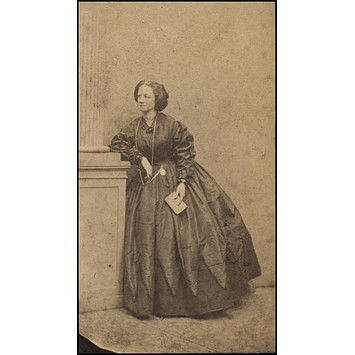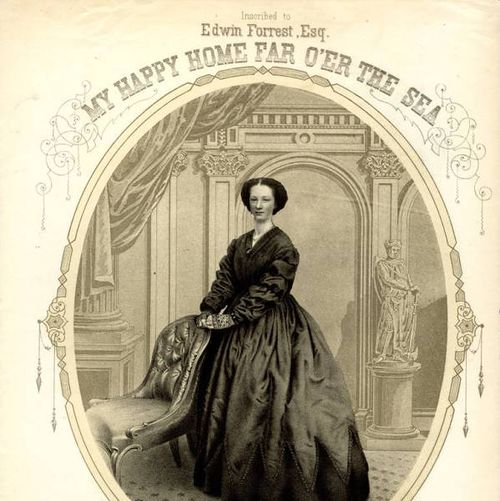Annotation:Miss Daly's Jig: Difference between revisions
No edit summary |
m Text replacement - "garamond, serif" to "sans-serif" |
||
| Line 1: | Line 1: | ||
=='''Back to [[{{BASEPAGENAME}}]]'''== | =='''Back to [[{{BASEPAGENAME}}]]'''== | ||
---- | ---- | ||
<p><font face=" | <p><font face="sans-serif" size="4"> | ||
'''MISS DALY'S 'JIG'.''' American, Dance Tune (cut time). A Minor ('A' part), C Major ('B' part) & F major ('C' part). Standard tuning (fiddle). ABCC. The word 'jig' in the title here refers to a type of syncopated 19th century old-time banjo tune rather than the familiar Irish jig in 6/8 time. 'Jig' dancing was a term for a solo step dance, perhaps imported from England. The term may also have had derogatory associations with African Americans, or may have been descriptive of the movements of the dance. | '''MISS DALY'S 'JIG'.''' American, Dance Tune (cut time). A Minor ('A' part), C Major ('B' part) & F major ('C' part). Standard tuning (fiddle). ABCC. The word 'jig' in the title here refers to a type of syncopated 19th century old-time banjo tune rather than the familiar Irish jig in 6/8 time. 'Jig' dancing was a term for a solo step dance, perhaps imported from England. The term may also have had derogatory associations with African Americans, or may have been descriptive of the movements of the dance. | ||
[[File:juliadaly.jpg|400px|thumb|right|Julia Daly c. 1861]] | [[File:juliadaly.jpg|400px|thumb|right|Julia Daly c. 1861]] | ||
| Line 11: | Line 11: | ||
<br> | <br> | ||
</font></p> | </font></p> | ||
<p><font face=" | <p><font face="sans-serif" size="4"> | ||
''Source for notated version'': | ''Source for notated version'': | ||
<br> | <br> | ||
<br> | <br> | ||
</font></p> | </font></p> | ||
<p><font face=" | <p><font face="sans-serif" size="4"> | ||
''Printed sources'': Cole ('''1000 Fiddle Tunes'''), 1940; p. 84. '''Ryan’s Mammoth Collection''', 1883; p. 116. | ''Printed sources'': Cole ('''1000 Fiddle Tunes'''), 1940; p. 84. '''Ryan’s Mammoth Collection''', 1883; p. 116. | ||
<br> | <br> | ||
<br> | <br> | ||
</font></p> | </font></p> | ||
<p><font face=" | <p><font face="sans-serif" size="4"> | ||
''Recorded sources'': <font color=teal></font> | ''Recorded sources'': <font color=teal></font> | ||
</font></p> | </font></p> | ||
Latest revision as of 14:22, 6 May 2019
Back to Miss Daly's Jig
MISS DALY'S 'JIG'. American, Dance Tune (cut time). A Minor ('A' part), C Major ('B' part) & F major ('C' part). Standard tuning (fiddle). ABCC. The word 'jig' in the title here refers to a type of syncopated 19th century old-time banjo tune rather than the familiar Irish jig in 6/8 time. 'Jig' dancing was a term for a solo step dance, perhaps imported from England. The term may also have had derogatory associations with African Americans, or may have been descriptive of the movements of the dance.

We do not know exactly who "Miss Daly" is, but there was a renowned American actress, singer and dancer named Julia Daly [1], whose heyday was the 1850's through the 1870's, who toured extensively and garnered fame abroad. Known for both comic and dramatic roles, she was also a songwriter. Her married name was Alwyn.

Source for notated version:
Printed sources: Cole (1000 Fiddle Tunes), 1940; p. 84. Ryan’s Mammoth Collection, 1883; p. 116.
Recorded sources:
